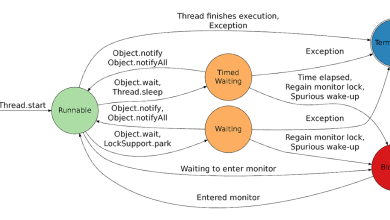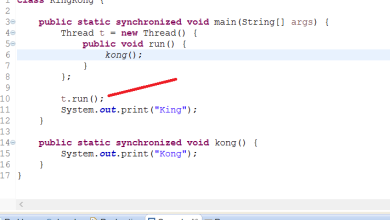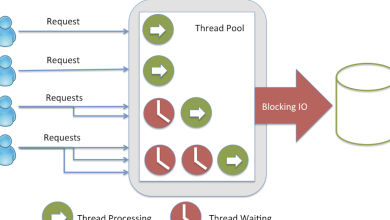Builder Design pattern in Java
Btw, In order to best understand design patterns, you need to work out some scenarios, examples, etc. It’s best to get this kind of knowledge as part of your work but even if you don’t get there, you can supplement them by joining online courses and doing some object-oriented software design exercises.
What problem Builder pattern solves in Java
As I said earlier Builder pattern is a creational design pattern it means its solves a problem related to object creation.
Constructors in Java are used to create objects and can take the parameters required to create objects.
The problem starts when an Object can be created with lot of parameters, some of them may be mandatory and others may be optional.
Consider a class that is used to create Cake, now you need a number of items like egg, milk, flour to create cake. many of them are mandatory and some of them are optional like cherry, fruits etc.
They also make the unit test complex as you need to pass too many nulls to just create object and that’s where Builder pattern comes to rescue. It allows you to create object with the set of parameters you want to create, which not only make your code cleaner but also easy to read.
Problems:
1) Too many constructors to maintain.
2) Error prone because many fields has same type e.g. sugar and and butter are in cups so instead of 2 cup sugar if you pass 2 cup butter, your compiler will not complain but will get a buttery cake with almost no sugar with high cost of wasting butter.
You can partially solve this problem by creating Cake and then adding ingredients but that will impose another problem of leaving Object on inconsistent state during building, ideally cake should not be available until its created.
Both of these problem can be solved by using Builder design pattern in Java. Builder design pattern not only improves readability but also reduces chance of error by adding ingredients explicitly and making object available once fully constructed.
Here is also a nice UML diagram of Builder design pattern which will help you to understand this pattern better:
Example of Builder Design pattern in Java
1. Guidelines for Builder design pattern in Java
1) Make a static nested class called Builder inside the class whose object will be build by Builder. In this example its Cake.
2) Builder class will have exactly same set of fields as original class.
3) Builder class will expose method for adding ingredients e.g. sugar() in this example. each method will return same Builder object. Builder will be enriched with each method call.
4) Builder.build() method will copy all builder field values into actual class and return object of Item class.
public static void main(String args[]) {
//Creating object using Builder pattern in java
Cake whiteCake = new Cake.Builder().sugar(1).butter(0.5). eggs(2).vanila(2).flour(1.5). bakingpowder(0.75).milk(0.5).build();
//Cake is ready to eat 🙂
System.out.println(whiteCake);
}
}
class Cake {
private final double sugar; //cup
private final double butter; //cup
private final int eggs;
private final int vanila; //spoon
private final double flour; //cup
private final double bakingpowder; //spoon
private final double milk; //cup
private final int cherry;
public static class Builder {
private double sugar; //cup
private double butter; //cup
private int eggs;
private int vanila; //spoon
private double flour; //cup
private double bakingpowder; //spoon
private double milk; //cup
private int cherry;
//builder methods for setting property
public Builder sugar(double cup){this.sugar = cup; return this; }
public Builder butter(double cup){this.butter = cup; return this; }
public Builder eggs(int number){this.eggs = number; return this; }
public Builder vanila(int spoon){this.vanila = spoon; return this; }
public Builder flour(double cup){this.flour = cup; return this; }
public Builder bakingpowder(double spoon){this.sugar = spoon; return this; }
public Builder milk(double cup){this.milk = cup; return this; }
public Builder cherry(int number){this.cherry = number; return this; }
//return fully build object
public Cake build() {
return new Cake(this);
}
}
//private constructor to enforce object creation through builder
private Cake(Builder builder) {
this.sugar = builder.sugar;
this.butter = builder.butter;
this.eggs = builder.eggs;
this.vanila = builder.vanila;
this.flour = builder.flour;
this.bakingpowder = builder.bakingpowder;
this.milk = builder.milk;
this.cherry = builder.cherry;
}
@Override
public String toString() {
return “Cake{“ + “sugar=” + sugar + “, butter=” + butter + “, eggs=” + eggs + “, vanila=” + vanila + “, flour=” + flour + “, bakingpowder=” + bakingpowder + “, milk=” + milk + “, cherry=” + cherry + ‘}’;
}
}
Output:
Cake{sugar=0.75, butter=0.5, eggs=2, vanila=2, flour=1.5, bakingpowder=0.0, milk=0.5, cherry=0}
2. Builder design pattern in Java – Pros and Cons
Live everything Builder pattern also has some disadvantages, but if you look at below, advantages clearly outnumber disadvantages of Builder design pattern. Anyway here are a few advantages and disadvantages of the Builder design pattern for creating objects in Java.
Advantages:
1) more maintainable if the number of fields required to create an object is more than 4 or 5.
2) less error-prone as users will know what they are passing because of the explicit method call.
3) more robust as only fully constructed object will be available to the client.
Disadvantages:
1) verbose and code duplication as Builder needs to copy all fields from Original or Item class.
3. When to use Builder Design pattern in Java
 Builder Design pattern is a creational pattern and should be used when a number of parameters required in the constructor is more than manageable usually 4 or at most 5.
Builder Design pattern is a creational pattern and should be used when a number of parameters required in the constructor is more than manageable usually 4 or at most 5. Don’t confuse with Builder and Factory pattern there is an obvious difference between Builder and Factory pattern, as Factory can be used to create a different implementation of the same interface but Builder is tied up with its Container class and only returns an object of Outer class.
That’s all on the Builder design pattern in Java. we have seen why we need a Builder pattern, what problem it solves, Examples of builder design patterns in Java and finally when to use Builder patterns with pros and cons. So if you are not using a telescoping constructor pattern or have a choice not to use it then the Builder pattern is the way to go.
Other Java design pattern tutorials from Javarevisited blog :



